
Most of us notice how gorgeous gardens are when the sun is shining, but how often do we see what a garden looks like at night? Between dusk and dawn, when moonlight illuminates the plants, visitors can enjoy unique insight into a garden’s personality. Night pollinators such as moths, native bees and bats are attracted to plants in a moon garden with white and pale-colored flowers that are intensely fragrant and produce a lot of nectar. As you walk through the moon garden, you will be able to watch these varied and industrious third-shift pollinators as they go about their important work.
Moon Garden Pollinator Benefits
Moths

White flowers show up well in moonlight, so moths flock to them. Moths also have an amazing sense of smell. They love flowers that are highly scented. Some moths hover over the plants to sip nectar with their very long tongues, and others land on flowers while they feed. Many kinds of moths, like sphinx moths, will visit honeysuckle, columbine and amsonia blue star.
Bats

In the arid Southwest, three kinds of nectar-feeding bats pollinate night-blooming plants. They prefer the nectar of large flowers, such as agave, yucca and many types of cacti. Blooms of white, purple and green, along with very strong scents, will attract these beneficial nighttime creatures.
Discover 9 features to look for in a bat house.
Native Bees

Although most bee species, including domestic honeybees, do their pollinating during the day, a few native bees, such as small sweat bees, work by night, using the moon and starlight to navigate through the garden. They pollinate evening primrose, monarda and campion.
Night-Blooming Flowers for Moon Gardens

“I’d like to add flowers that are suitable for moon gardens. What night-blooming plants do you suggest?” asks Field Editor Linda Barnes of New London, Ohio.
Horticultural expert Melinda Myers says, “It’s fun to add to the night landscape with white flowering plants! Both the very toxic Brugmansia and less toxic, white, night-blooming member of the morning glory group (Ipomoea alba) are commonly called moonflowers and are often included in moon gardens. You can also find a variety of plants with white flowers that remain open in the night.
Consider growing white-flowered varieties of annuals such as sweet alyssum, angelonia, verbena, cosmos, globe amaranth and flowering tobacco. Or try white-flowered varieties of perennials. Start the season off with white bleeding hearts, Dove columbine and peonies such as Festiva Maxima.
Fill the summer garden with Shasta daisies; White Swan, Fragrant Angel and Virgin echinaceas; and fragrant hardy lilies. Finish the summer and head into fall with Honorine Jobert anemone. Add some fragrance with a pot of tuberoses and additional color with night-blooming phlox and four-o’clocks.”
A moon garden can also include flowers in pale hues of yellow, blue, purple, green and pink, along with plants that have either silver or gray foliage. The pale blooms and silvery foliage reflect the light of the moon and stars, giving the garden a delicate glow. Plants with flowers that bloom at night, such as yucca, or blossoms that open at dusk and close in the morning, such as evening primrose, are magnets for night pollinators.
Moon Garden Plants with Silver and Gray Foliage

- Lavender: flowers of purple and blue
- Woolly lambs’ ears: pink flowers
- Horned poppy: yellow or orange flowers
- Sea kale: sprays of white flowers
- Helichrysum: yellow clusters of tiny flowers
- Santolina: yellow button flowers
- Silver Blade evening primrose: large pale yellow flowers
- Pussy-toes: delicate white or pink flowers
- Sage: flowers of purplish blue
Next, check out 15 beautiful white flowering shrubs.
What Is a Spark Bird?
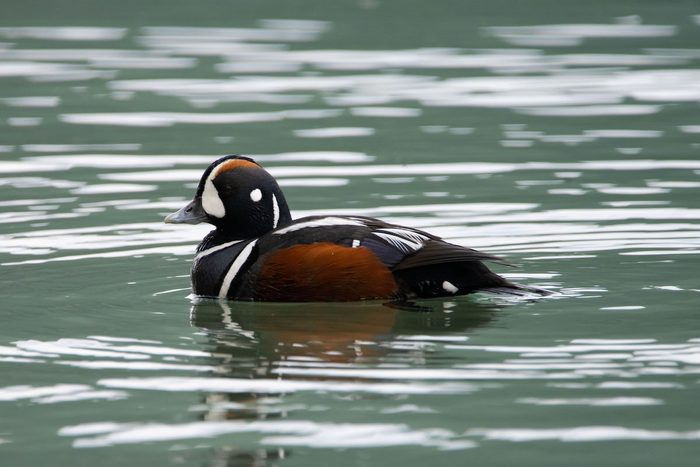
Many of us have had a lifelong love of nature, but there’s usually a point in time that stands out in our memories. This is our spark moment. The concept is especially popular with birders. A spark bird doesn’t have to be rare to have an appeal. Many people admit that they never paid much attention to birds, overlooking even the most abundant ones, until their spark moment captured them.
My own spark bird tale is quite atypical. When I was a teenager, a beautiful bird caught my attention. What makes my spark story unusual is that I didn’t actually see the bird itself. I was on a hike at a youth conservation camp in the Wind River Mountains of Wyoming.
At the trailhead I noticed a sign with a duck on it. I assumed it was a rare species, because the sign said the state game and fish department was interested in sightings. I’d been duck hunting with my dad, but I’d never seen a duck that looked quite like that one. It was slate gray with vibrant rusty sides and bold white markings along the head and body. I thought it was stunning.
The rest of the week I was distracted by thoughts of that duck. Though I didn’t find one on that trip, my spark had been ignited. For the first time ever, birds were on my radar—and at that moment I became a birder. The experience even shaped my future career, pushing me toward the field of wildlife biology.
Spark Birds Inspire Nature Lovers
Spark birds may be flashy, like bright-red cardinals, yellow goldfinches and blue indigo buntings, or they may be relatively plain, fading into the background. Perhaps it’s an interesting behavior that catches your eye, or maybe a friend helps you identify a species for the first time. No matter the scene, spark moments are life-changing events. Spark birds ignite curiosity and fuel the desire to learn more about nature, leading you to a lifetime of birdwatching.
If you haven’t met your spark bird yet, don’t worry. It’ll come when you’re ready. And until then, you’ll sure have a lot of fun looking!
Follow these top 10 dos and don‘ts of birding in the field.
Nature Lovers Share Their Spark Birds
Enjoy these experiences from birding experts and Birds & Blooms readers to learn how they got hooked on birds.
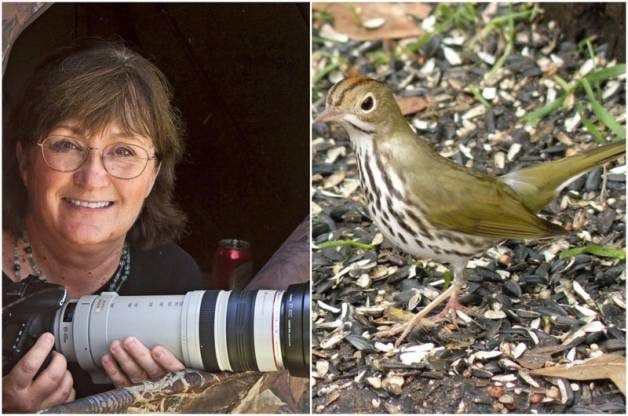
Laura Erickson
Author and naturalist, Duluth,Minnesota
My spark bird was a dead one, lying feet up on a sidewalk in downtown Chicago in 1968. It was exquisite, a tragic yet beautiful mystery: a tiny bird with an olive-brown back, white underside with black spots, white eye rings and an orange cap outlined with black. A few years later my mother-in-law gave me a field guide for Christmas. I opened it right to the page with the ovenbird. This little book was my passport to a whole new world. That ovenbird sparked a lifetime of love for birds.
Birdwatching for beginners: here’s how to start birding.

Jeffrey Gordon
Former president of the American Birding Association, Colorado Springs, Colorado
In 1977, I was looking at the birds visiting our feeders, something I’d been doing casually for years. I knew the regular visitors—house finches, towhees, nuthatches and so on. And of course I knew goldfinches. I knew they were yellow in the spring and duller in the fall, and that the females were heavily streaked below. But that day, while looking in my field guide, it hit me. Those streaky birds weren’t goldfinches at all. They were pine siskins. The sense of discovery was electric. In that moment, I became a birder.
See 25 small yellow birds you should know.
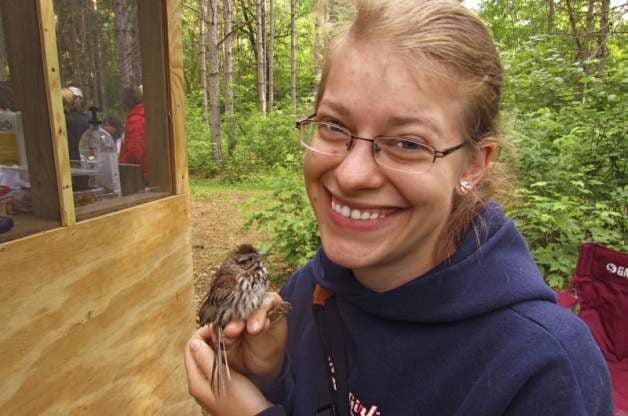
Rachel Butek
2010 Young Birder of the Year, Colfax, Wisconsin
The bird that truly sparked my interest was one special song sparrow. If I had known it was a song sparrow, it might not have made a difference. The intrigue of the unknown drew me to an old field guide. I waded through the pages of sparrows and finally identified my bird. I was tickled to find something so delightful right outside my window! That first childlike delight of discovering something new still drives my birding today.
See more types of sparrow birds to look for.

Jen St. Louis
Elmira, Ontario
I went a little nuts when I saw reports of snowy owls in our area. Not 20 minutes into our search, we spotted a female. That started my obsession with bird photography. I’ve started planning my feeders and gardens according to what birds I can lure in. To date, we’ve had 59 species in our yard!
Discover the amazing types of owls in North America.
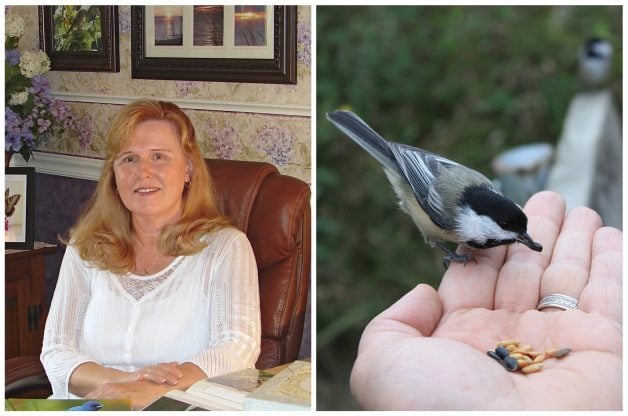
Sharon Sauriol
Macomb, Michigan
Chickadees always visit my feeders. They chatter so sweetly and are not afraid to come close to me. One day I held out my hand with a small piece of walnut in it. I was surprised when I felt the sweetest little peck as one of the chickadees took the treat from my fingertips. This experience changed things for me. I have been a birder ever since.
Junco vs chickadee: here’s how to tell the difference.
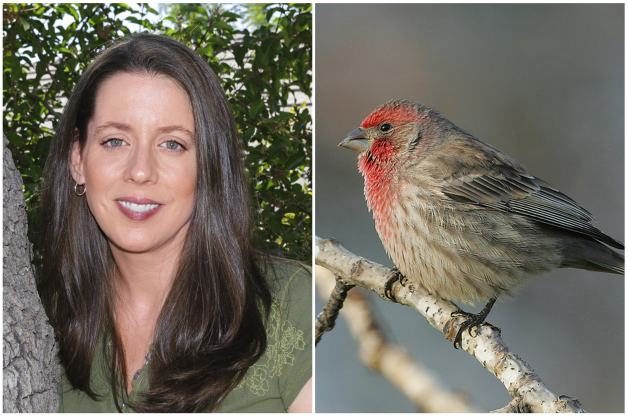
Tiffany Hawkins
Porter Ranch, California
One spring afternoon, I looked out the window at my new bird feeder and saw a strange visitor. I eventually learned it was a house finch. That bird opened up a whole new world to me. Birdwatchers have a term for birds that they see for the first time: lifers. Although my life list has since grown to 299 species, the most important lifer I ever saw was that little house finch. It truly was a life-changing spark bird.
Next, check out our guide on how to buy birding binoculars.
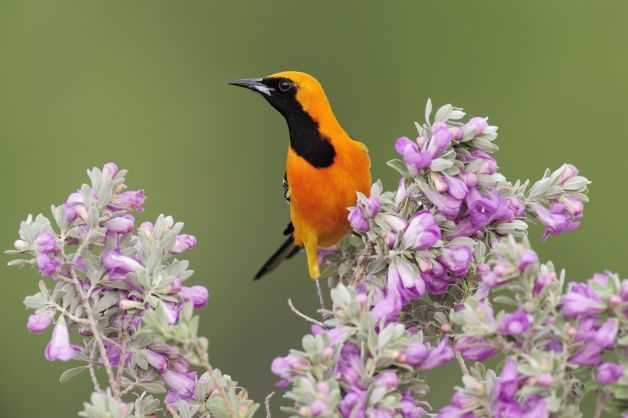
No matter what zone they live in, gardeners face limitations on what will grow in their backyards, especially in the extreme climates of the far North and South. Fortunately, there are lots of plants that are weather warriors—tough and resilient in even the most challenging climates. These are plants Northern and Southern gardeners rely on.
But if you live in a moderate climate, you too can glean some helpful information here. After all, plants that thrive in tough growing conditions could become your favorites, too.
Editor’s Note: Soil type, rainfall, day length, wind, humidity, heat and microclimates within a growing area all play a role in determining what will grow in your yard. Contact your local extension service to find plants specifically suited to your growing conditions.
Gardening in the North
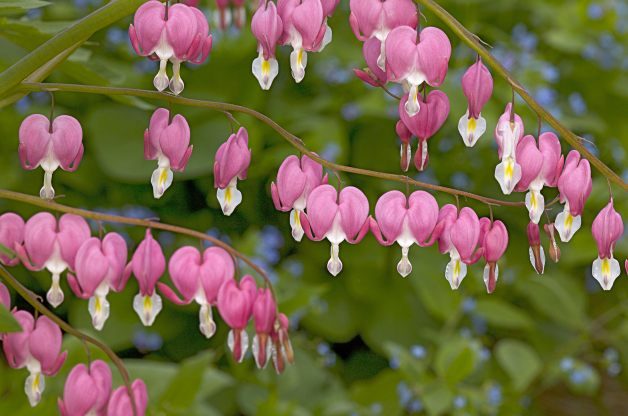
Unexpected frosts and short growing seasons (sometimes only a month or two) stack the odds against gardeners in the far northern regions. Susan Littlefield of the National Gardening Association says the secret to gardening in a cold climate is picking the hardiest perennials. For a long-lived perennial that blooms in late spring or early summer, Susan suggests peonies (Paeonia hybrids). There are many cultivars to choose from in shades of white, red or pink, with single, double or semi-double flowers.
Another reliable perennial is bleeding heart (Dicentra spectabilis). This longtime garden favorite produces arching sprays of heart-shaped pink flowers in spring. Brenda Harvieux of Northern Gardener, the Minnesota State Horticultural Society’s magazine, suggests a few other perennials beloved by gardeners in the far northern reaches of the state. “Bee balm (Monarda didyma), balloon flower (Platycodon grandiflorus) and Siberian iris (Iris sibirica) are a few perennials that are tough enough for Northern gardens,” Brenda says.
Northern Trees and Shrubs
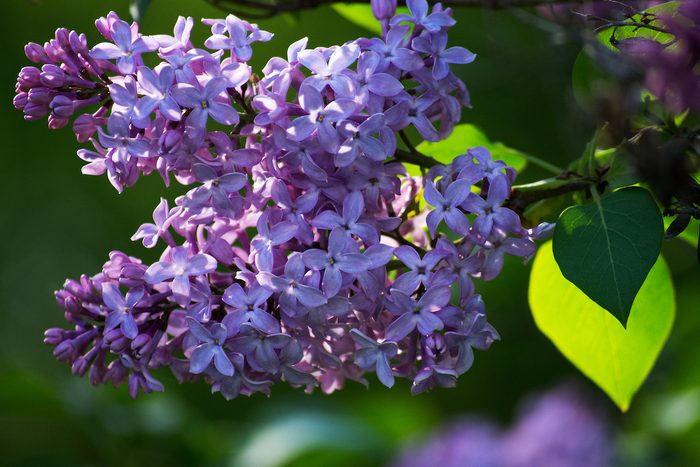
If you long for a delightful deciduous tree in the North, Susan suggests planting a paper birch (Betula papyrifera). This very hardy tree does best in areas with long winters and short, cool summers. Cultivars like Snowy, Prairie Dream and Renaissance are more tolerant of heat and bronze birch borers.
If you’re interested in a conifer for your Northern garden, consider a Colorado spruce (Picea pungens). Hardy and more drought-tolerant than other spruces when established, it’s well-adapted to conditions in the western United States. Fat Albert, a dwarf cultivar, tops out at about 15 feet tall. Colorado blue spruce (P. pungens f. glauca) is a popular larger form with very blue needles.
Looking for a standout shrub? Northern gardeners rave about PeeGee hydrangea (Hydrangea paniculata ‘Grandiflora’). In mid- to late summer, this impressive deciduous shrub produces large heads of white flowers that take on a pink tinge as they age. It is very hardy and long-lived.
For a sweet-smelling shrub, try a French lilac (Syringa vulgaris), a tough, old-fashioned favorite prized for its fragrant flower heads. There are many cultivars to choose from. Monge has dark purple flowers; Edith Clavell has white. These are large shrubs (8 to 12 feet at maturity), but a newer hybrid, Tinkerbelle (Syringa ‘Bailbelle’), is hardy to Zone 3 and grows 5 to 6 feet tall.
Easy Gardening in the South
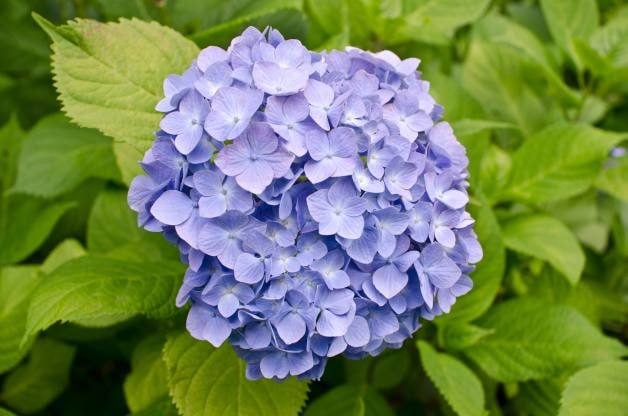
In the South, gardeners need a different strategy. Here, they must find plants that can survive sweltering temperatures, summer droughts and unpredictable winters. “In the realm of perennials, we grow roses and Stokes’ asters, iris, daylilies and daffodils,” says Nellie Neal, who blogs at gardenmama.com and gardens in the Deep South. “In my garden, I can’t live without hellebores, especially Lenten rose, or Indian pinks (Spigelia marilandica). Both bloom for weeks if not months and between them, the shade garden is a done deal.”
Horticulturist Noelle Johnson gardens in the Arizona desert. Yes, we said she gardens in the desert. “Cacti aren’t the only plants that grow in the desert,” she says. “So do beautiful flowering plants.” Without a doubt, her favorite perennial is Firecracker penstemon (Penstemon eatonii). “In late winter, spikes appear, covered with orange-red tubular flowers,” Noelle says. “Hummingbirds come in droves to drink the nectar.
“Another favorite that I recommend is purple lilac vine (Hardenbergia violacea). Lilac-shaped flowers appear in February and last for four to six weeks. The rest of the year, the vine is covered in beautiful dark-green leaves. It needs a trellis for support, although I have grown it as a ground cover as well. The flowers are non-fragrant, but I really don’t mind because they appear in winter in my Zone 9a garden.”
And while she’s not a huge fan of cactus, Noelle does love all types of agave, especially artichoke agave. “It grows to 3 feet by 3 feet and does well in full sun with very little water,” she says.
Southern Trees and Shrubs
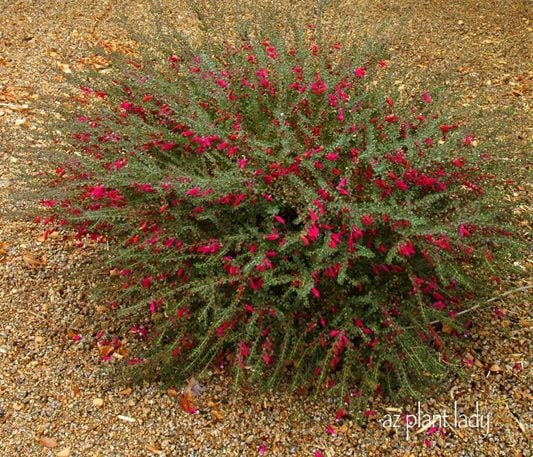
In the South, native and exotic plants get nearly equal attention. Southerners are happy to plant both new releases and the classics. Native oak trees are as popular as crape myrtles. “These summer-flowering trees are among the truly well-behaved exotics,” Nellie says. Summer is not complete without the vase-shaped thickets of Abelia x grandiflora loaded with pink and white nectar-filled trumpets. The smaller, variegated Kaleidoscope abelia is equally popular.
In the South, hydrangeas signal the arrival of warm weather. “We wait for the big flush of hydrangea flowers (Hydrangea macrophylla) to tell us summer is upon us, like Northern gardeners wait for crocus to herald spring,” Nellie says.
In the arid Southwest, Noelle sings the praises of valentine bush (Eremophila maculata), a stunning shrub that produces long red blooms from December to April. The bloom period peaks in February, hence its name. Valentine bush is very easy to grow and thrives in hot, reflected sun. Noelle also suggests Green Cloud Texas sage (Leucophyllum frutescens). Flushes of purple flowers appear on this large shrub off and on throughout summer and fall, often in response to humidity from the heavy summer rains.
Reader’s Regional Plant Picks
We asked readers to share their go-to North and South favorites. Here’s what they said:
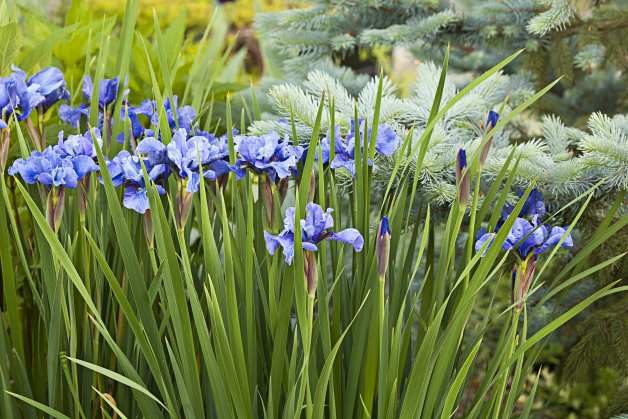
- “Here in the South, I plant lantana. It comes in many colors, and the hotter the weather, the better. It’s drought-tolerant and provides strong color,” says Becky Wooley, Austin, Texas.
- “Butterfly bush and rosemary both bloom from spring until winter,” says Pamela Dawson, Heber Springs, Arkansas.
- “Autumn Joy sedum is my winning pick for the North. It never fails to provide a great show year after year, no matter what kind of winter we have,” says Sue DeFrancis, Bloomfield Hills, Michigan.
- “I love viburnums. They face cold winters with brute force and come through with bright blooms in spring. Then they provide a nutritious berry crop for the birds in fall. It’s a win-win!” says Dianna Kerr, Derry, Pennsylvania.
- “Here in Georgia, native plants that attract birds and wildlife do best. They withstand the mild weather. Purple coneflower, beautyberry and redbud trees are all great,” says Amber Mooney, Powder Springs, Georgia.
- “Rhododendrons and dahlias do very well up here!” says Phyllis O’Neill Keating Mississauga, Ontario.
Enjoy instant success with one of these interesting—and effective— easy gardening ideas. There’s one sure to fit your personal style and space.
Straw Bale Gardening

This concept is so popular you can buy a whole book on it, Straw Bale Gardens, by Joel Karsten. Once you get the bales in place, they’re easy to plant and care for. Straw acts as both mulch and compost, keeping plants warm and well fed. And because the bales keep garden plants off the ground, there’s no more stooping!
- Step 1. Get your hands on some straw bales. Any variety will do, but wheat is most likely to be free of weed seeds. Contact a garden center, home-supply store or a local farmer.
- Step 2. Decide on your garden’s location and move the bales to that spot. With the straw shafts running vertically, place them end to end to form rows, or arrange in a pattern. Squares, starbursts and spirals are fun options.
- Step 3. Water and fertilize each bale thoroughly; you may have to do this a couple of times a week if it’s especially dry or warm out. Then allow five to seven days for the bales to “cook.” Once the bales are cool, pick off any weed shoots and spread a 2- to 3-inch layer of garden soil on top.
- Step 4. Using a garden trowel, pull back a clump of straw to make a hole for planting. If planting veggies with deeper root systems, simply go down a bit farther and add additional soil. Plant most any variety of vegetable you wish—peppers, cucumbers, tomatoes, mixed salad greens and herbs are all excellent candidates.
- Step 5. Water plants regularly, or, if bales are side by side, run a soaker hose along the tops. Use a supplemental fertilizer every couple of weeks.

Easy Garden Tip: Give your bales a makeover by surrounding them with a low white picket fence, or plant the corners with trailing nasturtiums and the sides with compact flowers like marigolds and sweet alyssum.
Learn more about straw bale gardening.
Grow Bag Gardening

So maybe, at first glance, alternative gardening ideas like, say, planting directly into a grow bag seems like the ultimate in laziness. But take a closer look and you’ll be convinced that success doesn’t always have to come hard.
An ideal option for green-thumb wannabes living in condos, mobile homes or urban jungles, grow bag gardens thrive almost anywhere. There’s no worry about weeds, and no guesswork about amending soil. Plus, it’s even attractive now that you have colorful grow bag options .
- Step 1. Position your bag wherever you like—on a patio, alongside the house, on a balcony—in an area that gets at least six to eight hours of full sun a day (if you’re growing vegetables like tomatoes, cucumbers or peppers; leafy greens can tolerate a few hours less). It’s important to position it first because it can get heavy to move later.
- Step 2. Fill your bag with soil all the way to the top. You don’t have to worry about drainage because these bags were designed to have good drainage built in.
- Step 3. Sow seeds or young plants in bags, and water well. Like most gardens, grow bags benefit from mulch, so pile on any chemical-free dried grass clippings, straw or fallen leaves you have on hand.
Learn how to grow a container garden for herbs.
Herb Spirals

What’s not to love? Herb spirals are an efficient use of space, as good as the soil you fill them with, and can be made out of most any building material—stone, brick, bamboo stakes, cinder block, even PVC pipe. Plus they’re pretty!
- Step 1. Place a wooden stake at the center of your future garden and tie a 2- to 3-foot length of string to it. Secure a can of spray paint to the other end of the string and mark the circumference.
- Step 2. Cover the staked-out circle with cardboard and wet thoroughly.

- Step 3. Starting from any point on the outside circle, begin creating a perimeter with whatever material you’ve selected, stacking or measuring higher as you go along. At the halfway point, work your way in to make a spiral that ends near the center of the garden and measures about 3 feet high.
- Step 4. Fill the spiral with garden soil and let settle for a couple of days.
- Step 5. Plant with a variety of herbs. Heat-loving plants like oregano, sage and rosemary will thrive near the top. Chives, parsley and tarragon do well in the middle, and herbs needing more shade and moisture, such as mint and lemon balm, will be happy near the bottom.
Easy Garden Tip: Herb spirals are a great way to make use of a small space. You just need a few feet in your landscape. Then you build it up with stone, brick or other materials and plant your favorite herbs.
Discover 7 easy ways to get free garden plants.
Cinder Block Garden Wall

No yard? No problem. Simply collect a couple of dozen cinder blocks and fashion a unique patio garden that’s bursting with a bounty of good eats. These look cool placed against a wall, in a corner or as stand-alone sculptural pieces.
- Step 1. Decide how many plants you’ll include and then prepare the same number of blocks for planting by gluing wire mesh to the bottom of each. Then line the inside of each block opening with landscape fabric.
- Step 2. Stack blocks to form a wall, creating any shape you wish. You can arrange blocks so that the plants grow either out of the tops or out of the sides.
- Step 3. Fill lined blocks with potting mix and slip in plants with smaller root systems, like succulents, herbs, leafy greens and dwarf varieties of your favorite vegetables. Water regularly.
Next, learn how to save money and recycle with cardboard gardening.
Transform your outdoor space into a lush backyard getaway by bringing vibrant blooms, dynamic foliage and unique plant textures into the garden. Many tropical plants are quite low maintenance and winter hardy, thriving in regions as low as Zone 6. Read on for the best tropical plant picks and care tips.
Check out the top 10 tropical fruit trees to grow.
Busting Outdoor Tropical Plant Myths
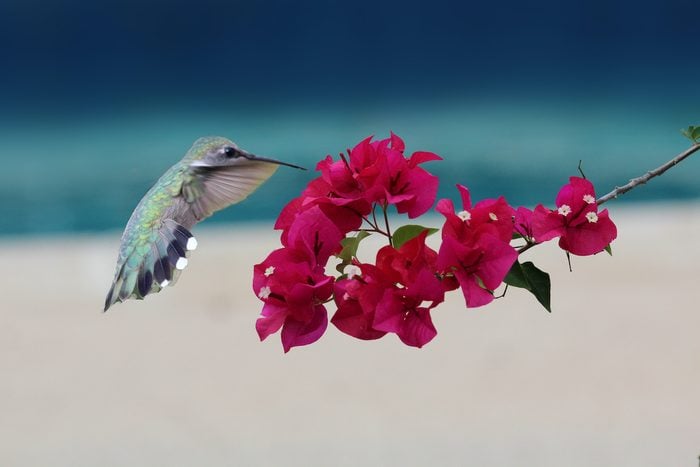
Contrary to popular belief, it’s easy to grow tropical plants, even if you live in a colder climate, if you keep them in balance with the rest of your garden, says Marianne Willburn, author of Tropical Plants and How to Love Them, who lives and gardens in northern Virginia.
“Growing one gorgeous red banana plant to create an anchor in a sunny corner is as easy as buying a small plant in May, providing rich soil and watering it, just as you would any temperate plant,” she says, “except this one can gain 10 feet in a season and create a stunning focal point.”
Marianne adds, “There’s nothing written in stone that says you have to keep it over the winter; just have a wonderful summer romance with it instead.”
Grow bougainvillea to add bright colors to your yard.
Getting Started With Tropical Flowering Plants

Marianne suggests selecting tropical varieties according to your garden’s hardiness zone, focusing on plants that pack a punch.
“Canna plants are a great place to get started, particularly those with variegated leaves such as Bengal Tiger or Phasion,” she says. “They can add a lot of texture to your beds.”
Canna offers a range of vivid yellow, pink, orange and red flowers that bloom from July to October, and oversized foliage.
Psst—here’s what you should know about the bugs that are eating holes in your canna leaves.

Many tropical plants such as angel’s trumpet, bougainvillea, yucca and jasmine make dramatic statements in the garden. Hardy hibiscus features massive bright blossoms from July to September in Zones 4 to 9, while the low-growing dwarf palmetto palm is pretty, drought tolerant and works well in either sun or shade.
Is tropical milkweed bad for monarchs?
Try New Tropical Plant Cultivars
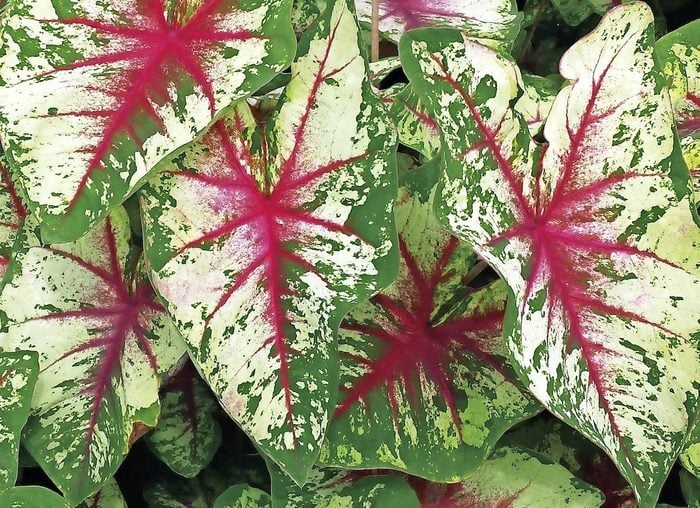
Marianne enjoys experimenting with new varieties and old favorites each year. She recommends planting caladium, ginger and begonia, all of which make great indoor houseplants at the end of the season.
“This year, the Snowdrift variegated edible turmeric cultivar really wowed me, as it looked so good against ornamental grasses and late-season allium,” she says. “For canna, it’s got to be Bengal Tiger as it is so versatile and color-pairs so well. And I adore brake ferns because they are so strong, but also delicate-looking and fabulous in containers.”
Marianne also recommends the Moonlight caladium cultivar, which is good at picking up light in shady spaces. “The new caladium cultivars for sun from Proven Winners are pretty impressive,” Marianne says.

Elephant ears, another popular choice, is a tuber-based plant that’s hardy starting in Zone 7. Different varieties can grow to between 3 and 10 feet tall, with huge leaves spanning 2 feet wide and 3 feet long. It’s an ideal corner addition to a tropical-themed garden.
“My all-time favorite elephant ear is the Xanthosoma cultivar Lime Zinger,” Marianne says. “Though it’s definitely got some competition in the new Colocasia cultivar Pharaoh’s Mask.”
Learn how to grow fragrant, tropical plumeria flowers.
Growing Tropical Plants in Containers

Treat tropical and subtropical varieties as the stars of your summer garden by providing them the right growing conditions.
“Give them rich, moisture-retentive soil and ensure they get enough water during the growing season,” Marianne says. “If you’re concerned about providing this in your beds, containers are the way to go.”
Healthy tropical plants need large containers with large drainage holes so they can perform their best and stick around until the fall frost. They’ll also benefit from soil mixed with compost.
Learn how to grow a drought-tolerant agave plant in containers.
Protect Tropical Plants Indoors During Winter

Depending on where you live, you can keep tropical plants year after year.
According to Marianne, “A few subtropical plants, such as the hardy banana, are fairly hardy to Zones 5 and 7 and just need a covering of mulch.” Be sure to look into recommendations for your specific plant picks.
Bring certain potted tropical plants or non-hardy bulbs inside during the winter to keep them happy. Plan ahead by growing these plants in containers with casters on the bottom. This will make the indoor move a breeze.
Don’t forget to store canna, dahlia and caladium tubers or rhizomes indoors in a dry, cool spot until spring.
Learn the difference between tubers, bulbs, rhizomes and corms.
Attract Pollinators With Tropical Plants

Because many tropical plants have oversized blooms, you’re likely to see larger pollinators visiting. In other words: The more tropicals you plant, the wider variety of pollinators you’ll see.
“One of my favorite things to do is crouch down deep into the border below the blooming canna and observe as the hummingbirds swoop and fight over blooms,” Marianne says. She notes that many of these plants also attract pollinating moths, particularly at dusk, so keep an eye out for these nighttime visitors.
Next, check out the top 10 vines to grow for hummingbirds.
Add Versatile Thyme Plants to Your Garden
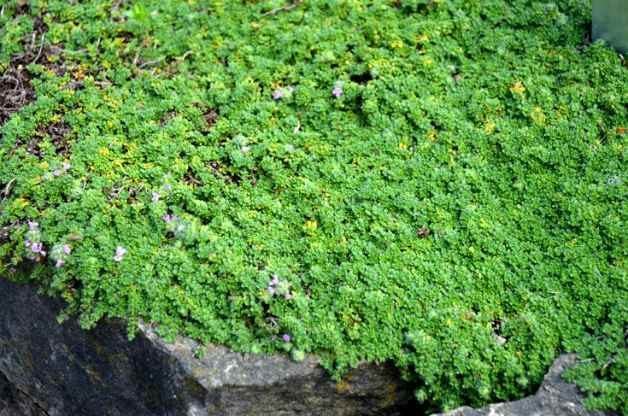
If you look in the pantry of any kitchen, you will probably find a container filled with this aromatic herb. A thyme plant (Thymus spp. Zones 4 to 9) is often used to flavor soups, gravy, meat and vegetable dishes. I like to use thyme to make herb butter. It also tastes great with fish and in lemon-flavored foods such as flavored iced tea or even cookies.
While thyme is a popular kitchen herb, did you know that thyme is also highly prized as an ornamental plant in the garden? Here’s what you need to know about growing a thyme plant.
Follow these tips to grow your best basil ever.
Are Thyme Plants Annuals or Perennials?

Thyme is a fragrant, low-growing ground cover that produces tiny pink, purple or white flowers, depending on the variety. Most thymes are perennial, winter hardy to zones 4 or 5.
In warmer climates, grow thyme as a perennial and harvest throughout the entire year. For gardeners in cooler climates, grow thyme as an annual. Its flowers add beauty to the garden in spring and summer. Thyme plants also serve as a pollinator plant for bees.
Learn how to grow a container garden for herbs.
Thyme Care and Growing Tips
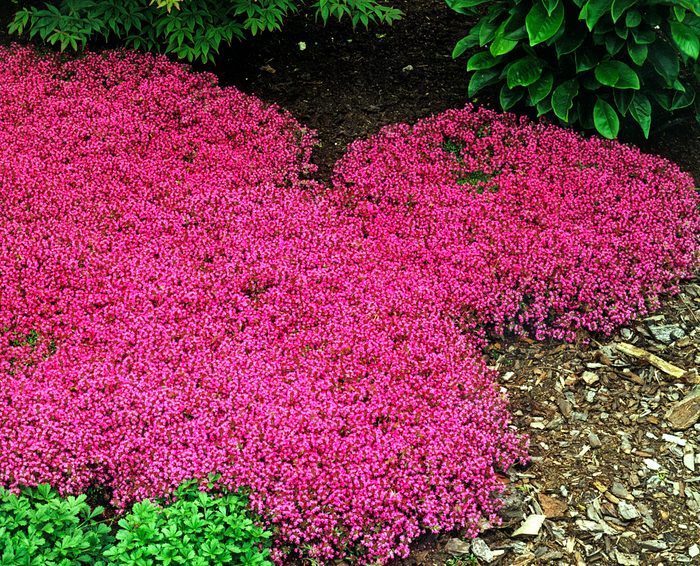
These plants grow well in sun and part shade, with low water requirements. They dislike soggy roots or root crowns, so plant them in locations with well-draining soil. Unlike some herbs that grow easily from seed, thyme does best when planted from transplants in spring once the danger of frost has passed.
Regular pruning of thyme is important. Otherwise it can become woody, producing few leaves and becoming unattractive. Begin pruning in spring and repeat in summer as needed. A good guideline is to remove 1/3 or less of the thyme plant each time. Finish pruning at least a month before the first frost or new growth can become severely damaged when cold temperatures hit.

Some lesser-known varieties include the fragrant Spicy Orange, Elfin, which grows in dense clumps, and Archer’s Gold, with beautiful saffron foliage in winter.
Upright thymes can reach 10 inches. Creeping thymes range from almost flat to 2 to 3 inches high and typically spread as ground cover.
Where to Plant Thyme
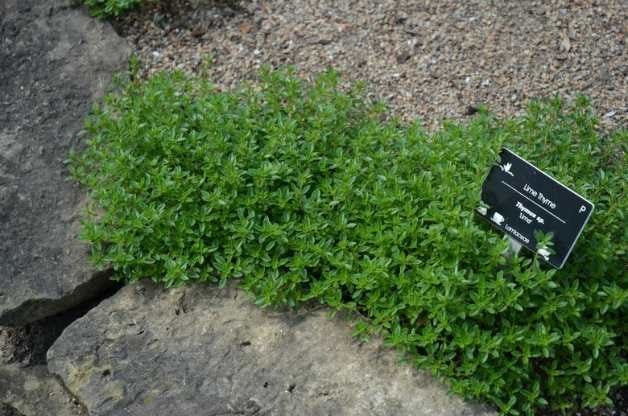
Thyme is quite a versatile plant in the garden. This herb can grow between bricks or stepping-stones, draping down over walls, in a rock garden or as a border plant. All varieties are fragrant and edible.
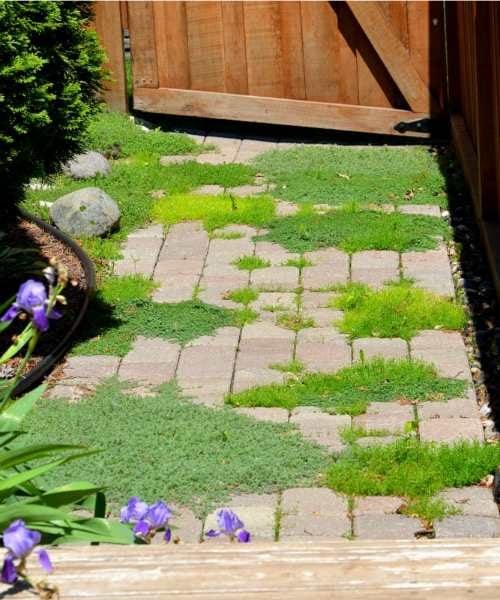
When planted along a walkway, thyme releases its aromatic fragrance when you walk on it. Creeping thyme tolerates light foot traffic—making it perfect along a stony path. It’s best used in an area such as a side yard that doesn’t get too much use. The area between rocks and along pathways is a tricky spot to grow anything (other than weeds!), but ground covers such as thyme thrive in these cramped areas.
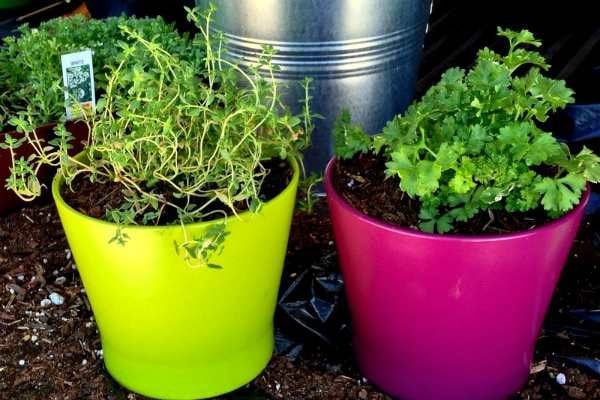
If your garden is too cold for thyme to survive in winter, then plant it indoors. Thyme is one of many herbs that does very well when grown in front of a sunny, south-facing window. Use a good quality potting mix and add a slow-release fertilizer every 3 months for best results. I planted the thyme plant above in September. It lasted throughout the winter and spring growing on my windowsill.
Learn how to grow a drought-tolerant rosemary shrub.
When to Harvest Thyme

Harvest thyme throughout the year in mild climates and in spring and summer in cooler zones. Like most herbs, the flavor is most intense just before flowering. Although the leaves will still taste delicious even if harvested when flowering.
Strip leaves from the stems and add them to your favorite dish. Thyme can also be easily preserved by drying or freezing into ice cubes.
Next, get tips for growing lavender plants in your garden.
Identifying Common Backyard Weeds

“Is this a weed or a flower?” I’ve been in the gardening and horticulture business for decades, and identifying weeds is still one of the most common questions I get year after year. In fact, gardeners probably bring me a few hundred “gifts” each spring in the form of mystery leaves, flowers and plants.
The truth is, we’ve all faced the dilemma of identifying weeds in your garden at some point. When plants start sprouting in spring, all those tiny leaves seem to look the same. I don’t know any gardener (myself included) who hasn’t grown a few weeds or accidentally weeded out a few desirable plants.
So I’m here to help. Hopefully I can at least point you in the right direction when it comes to identifying common backyard weeds. That will let you focus on your treasured garden plants instead.
Let’s take a look at some of the most common weeds in North America. If you can learn to recognize these, you’ll be well on your way toward eliminating most of the unwelcome leafy visitors in your yard.
Check out the best natural way to kill weeds.
Teasel
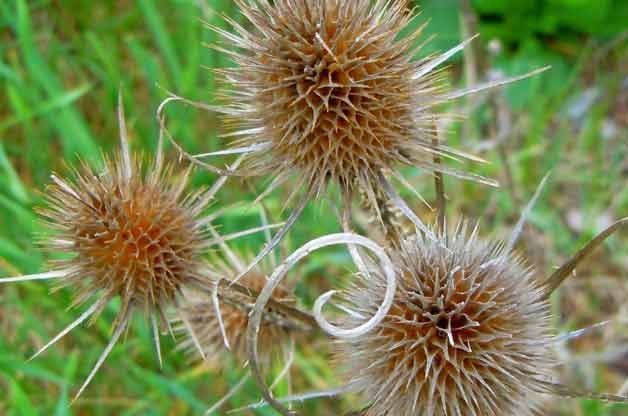
Teasel comes to mind right away. This thistle look-alike, brought to North America in the 1700s for processing wool, has spread into natural spaces. Its prickly stems and leaves make it undesirable to both wildlife and agriculture, so if you find it in your backyard, you’ll want to eliminate it.
Psst—these are the worst invasive plants you should never grow.
Buckthorn

Buckthorn, garlic mustard and purple loosestrife were once prized landscape plants, but they now crowd out native plants and disrupt natural ecosystems. It’s definitely worth your time and energy to try to get rid of them. Their presence reduces food sources and habitat for native birds, butterflies, beneficial insects and wildlife.
Quack Grass
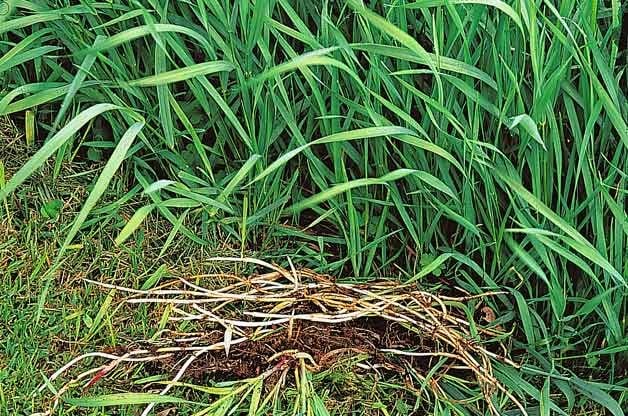
Quack grass is something most gardeners will encounter and they usually don’t have trouble identifying these weeds. Look for the long, white underground rhizomes that look like roots. Any piece of the rhizome that touches the ground can start a new plant. You must be thorough and persistent if you try to remove quack grass by hand.
Follow these tips for a weed-free backyard.
Crabgrass
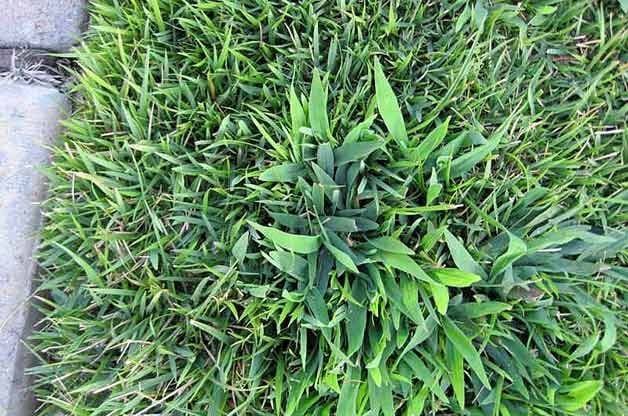
Crabgrass has a smaller, more fibrous root system. It thrives in hot, dry weather, making its presence known in mid- to late summer. You’ll find it growing in gardens, short-cropped lawns and places subject to hot, dry conditions. Mow lawns high to help lawn grass shade out the crabgrass. In the garden, you should pull crabgrass before the plants set seed, and mulch to help prevent seeds from sprouting.
If there’s Bermuda grass in your garden, here’s how to eliminate it.
Nutsedge

Nutsedge (also called nutgrass) is another common problem. The grasslike plants form underground tubers called nutlets. Persistence, early intervention and an integrated management strategy are critical for control of these weeds.
Check out 10 natural ways to keep bugs out of your garden.
Ragweed
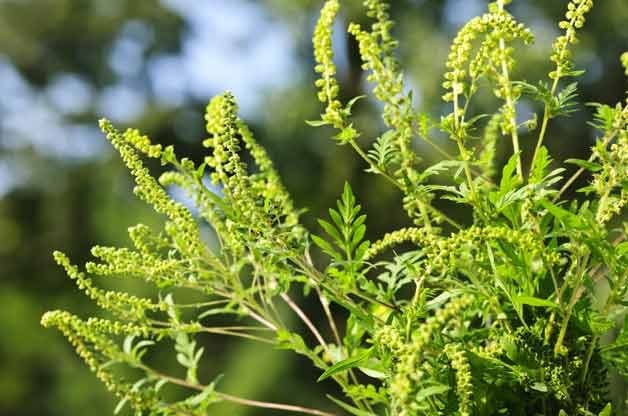
Ragweed is a plant that hay fever sufferers will particularly want to watch out for. You can usually find this pesky weed hiding behind its colorful neighbor, goldenrod. Be sure to mow it down or pull it before it has a chance to release its allergenic pollen.
Garlic Mustard
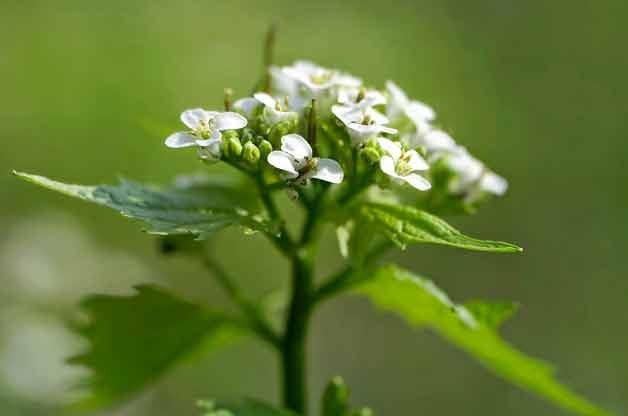
Garlic mustard was brought here for medicinal purposes and food, but it has become one of the worst forest invaders. A relative of mustard, this biennial plant produces thousands of seeds that can stay in the soil for seven years or more. Pull and properly dispose of plants just before they flower.
Creeping Charlie (Ground Ivy)

Creeping Charlie (also known as ground ivy) is another one I get questions about. It’s easy to identify by its round, scalloped leaves, which are fragrant when crushed. This shade-tolerant plant with purple spring flowers can quickly take over a lawn or garden bed. To get rid of it in the lawn, try a chelated iron-based weedkiller. In the garden, pull it out and mulch or use a total vegetation killer.
Dame’s Rocket
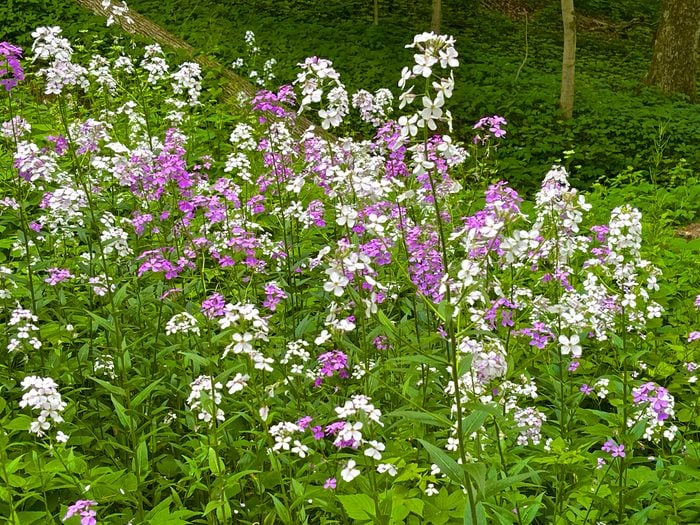
Dame’s rocket is a trickier weed, because it’s often misidentified as woodland phlox, and it looks so pretty blooming on woodland edges in spring. Unfortunately, this nonnative weed is often included in wildflower mixes, and it quickly crowds out more desirable native plants. Look for the four-petaled flowers that distinguish this from the five-petaled flowers of phlox—and then get rid of it.
Thistle

Thistle is another tricky one. Birds and butterflies love it, but gardeners and farmers hate it. Many thistles are listed as noxious weeds; they can quickly infiltrate and take over the garden. To control the spread, try removing them before they flower and set seed.
Field Bindweed

Field bindweed is one of the hardest weeds to get under control. It has flowers like a morning glory, and a deep root system, which makes it drought-tolerant and difficult to eliminate. Your best bet is to keep pulling the weeds as early as possible. Mulching will help prevent seeds from sprouting.
Poison Ivy

Poison ivy is the ultimate weed to avoid. “Leaves of three, let it be” is old but wise advice. All parts of poison ivy can cause an allergic reaction. You may stumble on it during a hike or find it creeping along the ground or crawling up a tree. Wear protective clothing and wash your hands and body thoroughly after touching.
5 Weeds to Reconsider

Though you may still want to manage them in the landscape, you might find that these plants, typically considered weeds, actually have value.
- Clover: Many lawn enthusiasts consider it a weed, but it’s an important source of nectar for bees and a tasty treat for wildlife. Some people grow clover lawns as a more eco-friendly alternative to traditional grass.
- Common purslane: This summer annual, which thrives in hot, dry conditions, is a tasty substitute for spinach. Pull it before it sets seed to keep it under control, but throw a little on your salad, too.
- Lamb’s-quarters: It’s moving off many weed lists and onto gourmet restaurant menus. But do a little reading before you eat: Too much can make you sick.
- Chickweed: This is another one that can quickly take over a garden, but it adds zing to a salad or sandwich.
- Dandelions: They aren’t as bad as people think. Birds eat the seeds, and the leaves have long been used in early-spring salads because they’re rich in vitamin C. Learn surprising dandelion facts you should know.
8 Weeds You Want to Grow
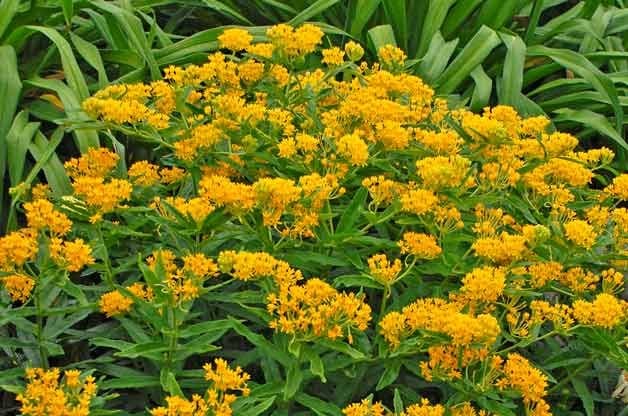
They might have “weed” in their name, but don’t be fooled. You actually want these garden favorites in your backyard.
- Butterfly weed or other types of milkweed (Asclepias)
- Sneezeweed (Helenium)
- Joe Pye weed (Eutrochium, formerly Eupatorium)
- Ironweed (Vernonia)
- Rosinweed (Silphium integrifolium)
- Jewelweed (Impatiens capensis)
- Soapweed (Yucca glauca)
- Staggerweed (Dicentra eximia)
Dandelions Are Edible

Foodies already know this one of our facts—dandelions are safe to eat. From blossom to root, 100 percent of this weed, which is also an herb, is edible for most people.
Find out more edible flowers that are safe to eat.
Dandelion Tea Is a Tasty Drink
Pharmacists in 19th-century England made tea from roasted dandelion roots. The drink is still trendy today, thanks to a coffee-like taste and color without caffeine.
See the top 10 plants to grow for a cocktail, mocktail or tea garden.
Dandelion Have Health Benefits
A cup of chopped raw dandelion greens provides 112 percent of the daily requirement for vitamin A (at only 25 calories).
Enjoy the mental and physical health benefits of gardening.
Dandelions Grow Larger Than You Think

Dandelion flowers reach heights of 6 to 24 inches, and roots go as deep as 10 to 15 feet.
Psst—this is the best natural way to kill weeds.
Dandelions Have Lots of Plant Relatives
Dandelions are part of the daisy family, one of the biggest in botany with more than 1,620 genera of plant types.
Learn interesting daisy facts you probably didn’t know.
Take a Closer Look at Dandelions

A single dandelion head consists of up to 300 ray flowers that look like tiny petals at first glance.
Check out the top 10 classic yellow flowers to grow.
Dandelion Facts in Literature
Use this one of our dandelion facts to impress your bookworm friends. Ray Bradbury’s 1957 novel Dandelion Wine gets its title from the wine the characters make and drink in summer.
Still don’t like them? Here’s how to get rid of dandelions in your yard.
Boost Your Garden With Free Plants
The only thing better than healthy and beautiful plants in your garden are free plants that are healthy and beautiful. It’s easy to spend over $100 at a greenhouse or nursery. But you don’t have to shell out big bucks to get big results.
Just take a look at these easy gardening solutions to get more free plants for your yard. The following ideas are simple, free, and guaranteed to add beauty to your flower beds. All it takes is a little time and effort to get plants for free.
Check out these budget-friendly plants that attract birds.
Save Seeds

Every year, most flowers “go to seed.” You’ve probably heard this term before, but did you know that you can collect those seeds to plant in your garden for next year? It’s easy, as long as you have your timing right.
First of all, do not collect the seeds before they ripen. If you do, chances are they won’t sprout. Instead, wait until the seed head is almost completely dry. Then cut off the stem and place a bag (or even some old pantyhose) around the seed head.
Store in a cool location and give the flower another week or so to dry completely. During this time, the tiny seeds will fall out. Once you collect them, store them in a cool location until next spring. If you want to get a jump on the season, start seeds indoors and then transfer your seedlings after the danger of frost has passed.
Follow these tips for saving tomato and veggie seeds from your harvest.
Divide and Conquer

Many gardeners overlook fall as a time to divide plants, but it’s actually an ideal time for several varieties. (A good rule of thumb is to divide spring bloomers in fall and fall bloomers in spring, though there are exceptions.)
Look for overgrown plants in your own yard. To divide, dig around the entire perennial. Then split the plant into halves, fourths or even more—if it’s large, use a garden fork or shovel. Plant the divisions at the same depth as they were previously. For best results, add a little organic matter and offer some protection for winter, especially if you live in a cold climate.
Read this before buying a plant at the garden center.
Overwinter Your Annuals

If you have the space, overwintering annuals like impatiens, geraniums, coleus and more is a great way to save money next spring. To overwinter your annuals, dig up as much of the root system as possible. Then use a good houseplant soil mix and a clean, well-draining container.
Place the annuals in a warm place, sunny location near a window or under artificial lights. To avoid scraggly plants, pinch them back throughout the winter. Come spring, plant them in your garden or containers. You’ll get a great jump-start on the season, and it didn’t cost you a thing!
Take a Cutting

If you don’t have room to overwinter all your big, established annuals, try taking cuttings of your favorite plants instead. (Or you can turn a single plant into several little ones by doing several cuttings.) This is a basic gardening strategy to save your plants until spring, and it doesn’t take a lot of room or money. Just keep in mind, patented plants should not be propagated.
For best results, cut your plant above a node (where leaves form) so the stem is left neat and tidy. Remove the lower leaves, then dip in rooting hormone and bury in a small cup of well-drained soil. Once you plant and water your new cutting, place it in a loose plastic bag. This will create a nice little greenhouse to help the cuttings root. After the plants have rooted, you can transplant them, and you’ll have great new plants for spring!
Too many roots? Learn how to fix a root bound plant.
Find Plants that Multiply
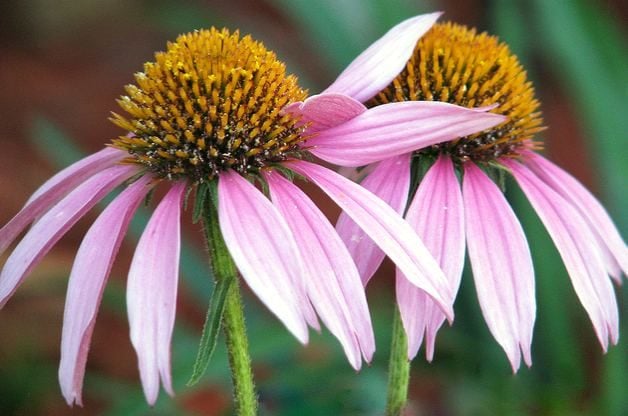
Many plants will multiply on their own if you’re patient. Cleome, hardy lilies, flax and perennials like coneflowers and more will multiply in the right conditions. Your best bet is to make sure your soil is prepared by amending it with organic matter. Remember not to weed until later in the spring, so you won’t kill sprouting seeds. Know what you’re looking for, and you might find a few surprises.
Learn how to identify weeds in your garden.
Search for Free Plants

Gardeners are very giving people and, now, thanks to the Internet, it’s easier than ever to find those generous offers of free plants. Your local Freecycle Network is a good starting point. Some sites are more active than others, but it’s a great way to find giveaways. Also, check out the “free” section of your local Craigslist, a great place to find gardeners who are trying to get rid of excess plants.
Of course, you should take “free” at your own risk. Make sure the plants you get are free from disease and pests. And do a little homework on the people you’re getting the free plants from. Most gardeners are very welcoming and generous people, but it’s better to be a little cautious up front.
Psst—never skip these gardening tips from master gardeners.
Try a Seed Exchange

Seed exchanges are a great way to try new plants without spending a lot of money. Organize your own locally with a church, garden, library or other social group. Or go online, where you can find some great exchanges as well. If you do trade seeds with others, make sure the varieties are a good fit for your region.
Or try a plant exchange. Ask around to find other gardeners who would like to trade. It’s a great way to try new plants for free! Again, make sure you’re trading healthy, non-invasive, disease- and pest-resistant plants. You’ll get an early start on the growing season since the plants are already fairly sturdy.
Next, get tips on how to grow indoor plants from real gardeners.